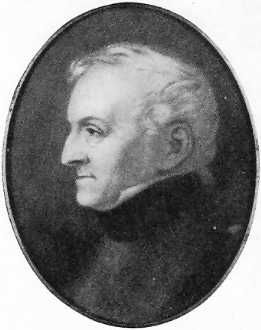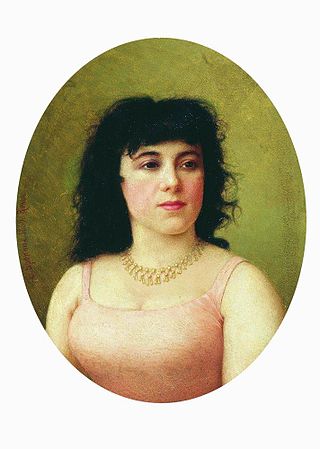
Michael William Balfe was an Irish composer, best remembered for his operas, especially The Bohemian Girl.

Filippo Taglioni was an Italian dancer and choreographer and personal teacher to his own daughter, Romantic ballerina Marie Taglioni. Also, although August Bournonville's version is better known, it was Taglioni who was the original choreographer of La Sylphide, in 1832.

Carlotta Grisi was an Italian ballet dancer. Born in Visinada, Istria. Although her parents were not involved in the theatre, she was brought up in an opera family. She was trained at the ballet school of Teatro alla Scala in Milan and later with dancer/balletmaster Jules Perrot. She was especially noted for her performance in the classic role of Giselle.

Francesca "Fanny" Cerrito was an Italian ballet dancer and choreographer. She was a ballerina noted for the brilliance, strength, and vivacity of her dancing. She was also one of few women in the 19th century to be recognized for her talent as a choreographer.

A ballet master is an employee of a ballet company who is responsible for the level of competence of the dancers in their company. In modern times, ballet masters are generally charged with teaching the daily company ballet class and rehearsing the dancers for both new and established ballets in the company's repertoire. The artistic director of a ballet company, whether a male or female, may also be called its ballet master. Historic use of gender marking in job titles in ballet is being supplanted by gender-neutral language job titles regardless of an employee's gender.

Carlo Blasis was an Italian dancer, choreographer and dance theoretician born in Naples. He is well known for his very rigorous dance classes, sometimes lasting four hours long. He danced in France, Italy, London and Russia. Blasis insisted that his students learn theories and definitions of dance steps. He trained all of Enrico Cecchetti's teachers and it is thought that Blasis's influence in his training is what led Cecchetti to create the Cecchetti method of ballet.

Margaret Morris was a British dancer, choreographer, artist and teacher. She founded the Margaret Morris Movement, Celtic Ballet and two Scottish National Ballets in Glasgow (1947) and in Pitlochry (1960). Morris devised a system of movement notation, which was first published in 1928.
The La Scala Theatre Ballet is the resident classical ballet company at La Scala in Milan, Italy. One of the oldest and most renowned ballet companies in the world, the company pre-dates the theatre, but was officially founded at the inauguration of La Scala in 1778. Many leading dancers have performed with the company, including Mara Galeazzi, Alessandra Ferri, Viviana Durante, Roberto Bolle and Carla Fracci. The official associate school of the company is the La Scala Theatre Ballet School, a constituent of the La Scala Theatre Academy.

Virginia Zucchi was an Italian dancer. Her career as a ballerina spanned the years 1864 to 1898, and she was known as "the Divine Zucchi" or even "the Divine Virginia" for her artistry, expressiveness, and virtuosity. Perhaps her most lasting legacy is the celebrated La Esmeralda pas de six, which Marius Petipa created for her to the music of Riccardo Drigo in 1886. She was a guest artist in Berlin, London, Paris, Madrid, Milan, Naples and Rome. She was a force in introducing Italian technique in Russia.

Hélène Kirsova was a Danish prima ballerina, choreographer and ballet teacher and is noted as the founder of the first professional ballet company in Australia. She trained in Paris with former Sergei Diaghilev ballet dancers and choreographers. She then performed in companies run by Léo Staats and Ida Rubinstein before in 1931 becoming a soloist with Les Ballets Russes de Monte Carlo, dancing for several years in Europe and North America. In 1936, as a principal dancer, she joined René Blum's Les Ballets de Monte-Carlo in which she scored a singular success in London. Later that year she joined Colonel Wassily de Basil's Monte Carlo Russian Ballet as prima ballerina on an extensive tour of Australia and New Zealand where she was fêted by critics and audiences. She remained in Australia, started a ballet school in Sydney, and in 1941 formed the Kirsova Ballet. Despite wartime restrictions she directed the company for several years before retiring in 1948. She has been described as the "Godmother" of Australian ballet.

Adèle Alphonsine Dumilâtre was a French dancer, famous in the days of romantic ballet. After her marriage to Francisco Drake del Castillo she became a Countess.

Carolina Alice Brianza, who went by the name Carlotta Brianza, was an Italian prima ballerina, dancing with La Scala in Milan and later with the Mariinsky Theatre in Saint Petersburg.

Carolina Rosati (1826–1905) was an Italian ballet dancer who gained fame with the Paris Opera Ballet and the Imperial Ballet in St Petersburg.

Amalia Ferraris was an Italian dancer.

Sofia Fuoco, was an Italian ballerinn, born as Maria Brambilla; her stage name, Fuoco means ″Fire″ in Italian.
In 1830, Italian ballet teacher and writer Carlo Blasis (1803–1878) published his second work on the analysis of ballet technique, called The Code of Terpsichore. This work was composed of figures, or illustrations, organized alphabetically, inscribing the ideal forms of poses, steps, and jumps in ballet. In codifying the tradition of ballet training, Blasis valued both the mechanical and aesthetic aspects of ballet.
Emma Amalia Virginia Palladino was an Italian ballet dancer who for seven years was the prima ballerina at the Alhambra Theatre in London where she danced to the ballet music of the theatre's resident composer and conductor Georges Jacobi.

Marietta Baderna Giannini or Maria Baderna was an Italian ballerina, born in 1828, died c. 1892. At age 16 she was the principal dancer at La Scala in Milan, when the unusual lithograph of her, surrounded by 16 poses, was published. She appeared in Drury Lane, when Carlo Blasis was guest choreographer there. On her first appearance there, in a new ballet The Pretty Sicilian in 1847, one reviewer saw room for improvement:
"In form she is petite, her features are most expressive and pleasing. She wears her hair in the most trying of all fashions-- the Chinese, but, withal, looks sweetly pretty; as candid critics we are bound to say there was nothing astonishing in her execution - it wanted that neatness which her predecessor, Fuoco, so eminently possessed. Still, it must be remembered that she is very young, and practice will make perfect for she is most graceful, especially in the position of that most difficult portion of the human frame divine - her arms. Even as the ballet proceeded we thought we saw improvement, for in the pas de deux with the Count she was deservedly and enthusiastically applauded."

Augusta Maywood, born Augusta Williams, was the first American ballerina to gain international recognition. In a career spanning forty-four years, she danced at the Paris Opera and became prima ballerina at both the Teatro Nacional de São Carlos in Lisbon and La Scala in Milan. Maywood was the first ballerina to have her own touring ensemble company.

Giacomina "Amina" Boschetti was an Italian romantic ballet dancer.


















